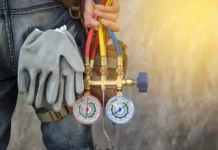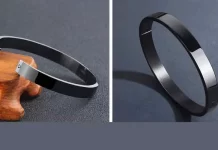With a range of 3D animation software available, from free to priced, it is hard to go wrong with the right choice. 3D software makes a variety of tasks easy to imagine, plot out, and execute. The medical industry is no exception.
In the busy world of hospitals, doctor’s offices, and diagnostics, 3D animation provides solutions to otherwise impossible problems.
In this article, we will explore 3D animation, some common uses, and how the medical field is able to put this technology to good use. For more information, read on!
Types of 3D Animation
When you hear the phrase “3D animation,” you very likely first think of an art form. And at its core, it is.
The very first type of 3D animation has been around for a lot longer than you may expect. Claymation was introduced in the early 1900s as a way of creating 3D movement in film and photography. Claymation (clay animation) is still used in movies to this day.
It was not until the 60s that computer animation began to take the place of claymation. Computer animation, known as CGI, consists of building models digitally with computers instead of by hand, like you would with clay models.
In modern cinema, CGI runs rampant and can be found in movies ranging from action to horror to drama.
What It Is Used For
The great thing about 3D animation software is that its uses are innumerable.
CGI has its place in film and television, as does claymation. But 3D animation is not limited to cinema.
Ever work on a building project and wish your blueprints were 3D? The right animation can make that happen. A drawing can come to life in the hands of a skilled animator.
The same can be said for office projections. Generating graphs and charts is one helpful way to represent the state of finances or a reflection on sales numbers. But adding that extra zing with a 3D chart that shows a projection of sales growth over the next ten years can make your presentation much more impactful.
The animation technique can even become a staple of marketing. Creative advertising, from commercials to internet GIFs to promotional materials of all sorts, 3D animation serves a great purpose in making marketing projects come to life.
In nearly every industry, 3D animation has its uses. Architecture to construction to banking to hospitality, to more. Even the medical field can reap some fantastic benefits when using 3D animation.
The Medical Field and 3D Animation Software
First, medical 3D animation holds great value in education in a variety of different ways.
Medical textbooks are already complicated. That is why animations of a 3D animal cell, the body’s heart, or the smallest atom are so helpful. Animation allows for movement within a timeframe.
By animating a human heart, for example, students have the chance to see an entire heart from all of its different angles. This type of visual learning has a significant impact on assisting medical students in learning different parts of the body, cells, etc.
Second, this 3D animation can help scientists launch incredible discoveries that lead to new medicines, vaccines, or other life-saving equipment.
Developing medicine is an incredibly complex and complicated process. Scientists and medical professionals must work out different scenarios and tests over and over again, along with math and different formulas.
Allowing scientists to put together a 3D model can help them visualize the way various chemicals and compounds may interact. Or it can allow these scientists to look at a scenario that affects the heart, for example, and how that scenario can affect other areas of the body.
3D modeling is also beneficial to a group of scientists who are working on the same project. Visuals are some of the best materials to use in any type of project. By having a 3D representation of materials, scientists can further work together while having a model to reference.
How 3D Animation Closes the Gap in Healthcare
Modern medicine has made some serious, life-saving advances over the years. But the reality is there are still areas that are lacking.
Access, affordability, and quality of medical care still affect a staggering number of people. Fortunately, 3D animation can help to close this gap.
3D animation allows for improved communication between doctors, hospitals, and specialists. A 3D representation of issues can greatly improve treatment options for patients with complicated issues. Unlike 2d x-ray scans, a 3S image allows for an exact diagnosis and a more specific treatment plan.
The better the treatment plan, the better a patient’s care. And boosting the accuracy of treatment improves the quality of healthcare. 3D animations are also more flexible in their viewing, allowing professionals and patients alike to zoom in on images instead of studying a flat x-ray.
3D animation can also assist in tele health. Allowing patients to examine a 3D rendering of a human body can help to pinpoint exactly where they are feeling pain. This helps their physicians understand what is going on within their bodies.
And for those who live in rural areas where healthcare is hard to come by, telehealth is a critical element to their health. Improving each telehealth visit allows for better quality care without a patient having to make significant adjustments in their day-to-day life to get into a medical office.
Learn More About 3D Animation
Now that we have gone over some of the basics of 3D animation, its history and uses, and how it relates to the medical field, it is time to learn more.
This fascinating medium has a host of applications, even if you do not work in the medical field. To learn more about it, explore our blog and learn more about 3d animation, the medical field, even the latest in technological advances. Check us out on social media, too.























